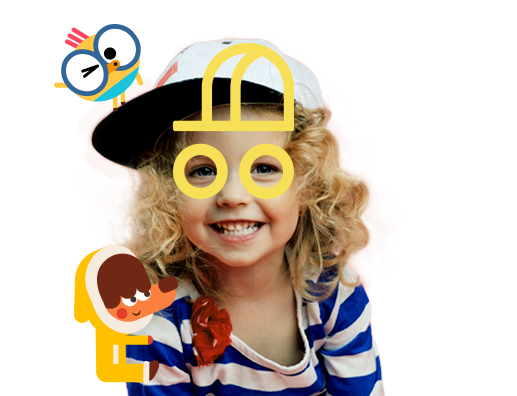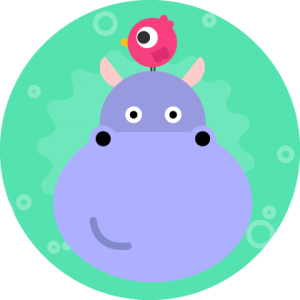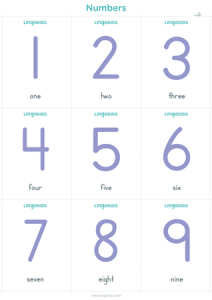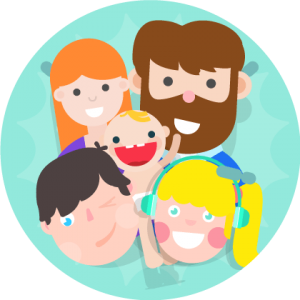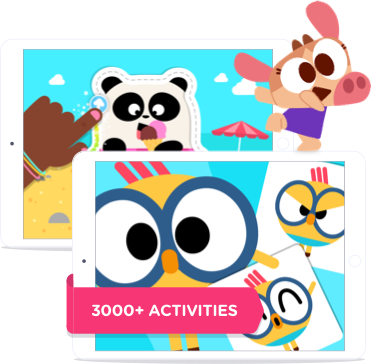Is your child ready to start playlearning™?
Get your child ready to playlearning™ downloading the Lingokids app!
Topics
What’s your biggest motivation for learning a new language? It could be for work, travel or just for pleasure. However, it’s known that the world is a big place, with lots of people from many different cultures who speak a variety of languages, and day after day all these people are more connected than before. One of the main things that allow this flow of communication to happen is speaking the same language: English.
Learning English has become one of the main objectives for a majority of the population around the world, and it’s a fact that the sooner a person starts learning this language, the overall proficiency in it becomes much better. This is why parents and teachers all over the world are focused on providing the best education for their children, this way they can make sure they learn English as a second language properly. The opportunities that come with speaking English as a second language as adults are many, it helps people bypass the language barriers, allowing them to get access to a variety of careers and studies that would otherwise be unattainable, and also, it helps them communicate efficiently in both work and leisure environments.
What’s the best way to learn English for Kids?
For children, learning a new language can be challenging, especially a second one, since they’re still getting to know their main tongue. However, it’s beneficial for the little ones that the language learning process happens as naturally as possible, since this is the perfect way to make sure they remember all the new vocabulary about the several topics in English they learn, and more importantly, that they know how to use these new words in the right context.
English for children ages 2 to 4
English for children ages 4 to 6
English for children ages 6 to 8
By mixing different teaching techniques, the learning process becomes more natural and effortless, allowing children as young as two years old to start understanding the English language. These techniques can vary according to children’s age, however, one thing is for sure, and it is that for the youngest of the house the best way to learn a new language is through repetition. The advantage of having the same content showing up on different activities is that children get acquainted with it quicker, and they usually learn it more easily. Also, it’s good to notice that the activities used for teaching a language should be both educational and engaging, so children can be interested in them.
Among the most common and effective techniques and materials to teach the little ones a new language are:
- Flashcards with images, which help them associate the words and the objects they represent in a more visual way as they read the name of the object and then look at how it’s represented;
- Songs in English, these are a great asset given that music is fantastic to introduce new vocabulary to kids, they enjoy singing and dancing, and learning the lyrics to their favorite tunes;
- Worksheets, these are great to practice the written part of the lesson, of course, this is for the little ones that are old enough to write, or that are starting to exercise their writing skills, these can also be used as an assessment method to evaluate the progress of the little ones;
- Audiobooks, these are not only the perfect way for introducing more complex stories for the little ones, but they also help with the pronunciation of a new word and helping the youngest ones speak English;
- Traceables, which are a great way to improve the little ones reading and writing skills while also working on their motor skills.
The idea is to mix it up and to change the learning method to be able to make the most out of the lesson.
To get into the more intricate content, like grammar, it’s true that practice makes perfect. However, practice doesn’t need to be boring! Grammar can be incorporated into games for kids that allow the little ones to practice as much as possible while enjoying themselves. Usually, as they grow up, grammar will be the main focus in their schools, but for children without previous English knowledge, learning this can be tough. In contrast, kids who have a more varied vocabulary before starting English lessons at school tend to grasp the more challenging concepts more quickly.
Here, in Lingokids English for Kids, you will find all the material needed to offer the best preparation and evaluation for your children’s language learning. With the diverse educational content we offer online, your little ones will practice how to spell properly by using fun printable activities, or watching videos in English where they can practice the lesson at hand with our various teachers, and also you will be getting the best tips to complement all the topics with games, activities, songs, and lyrics, to have the most varied learning techniques easily available at home.
The main focus of the best English courses is to provide a total immersion environment that can be easily enjoyed by all kids, this way it becomes easier to recreate the natural experience children have when learning their main language. That’s why in Lingokids the total immersion experience is so important, it is the perfect way to improve the English level of a child but in a natural, engaging way.
